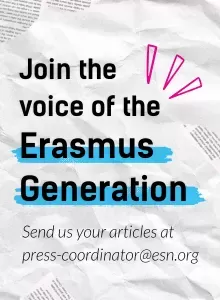
In general, all the requirements are on the website of the faculty/university, but there are some topics that are not mentioned specifically on the platform. One solution would be to contact the Erasmus office directly for more details, but it can take a couple of days to receive an answer. But back to the main idea: this is what an Erasmus application file should contain:
ㅤ
1. First of all, you need the necessary documents proving that you are a student of the University where you are applying and that you have good grades during your studies—student ID and your personal ID.
ㅤ
2. A Curriculum Vitae, also known as the ‘holy’ CV. It should contain personal information, career information such as your work experiences and education (in most cases, at this stage, education is more highlighted as it is a study mobility), extracurricular activities like volunteering or projects you took part in, speaking/digital/organisational skills, hobbies, etc. The CV is like a bigger version of a business card that represents you, so take this into consideration when you are creating it. For Erasmus+ grants, a CV in Europass format is generally required.
ㅤ
3. Language certificate. When considering applying, you should take into account that you need to know at least one foreign language that is spoken in the country you are applying for. It is not compulsory to already have a diploma when you submit your application, but it would be advisable to have one, or to take a language test shortly. However, Erasmus will offer language learning support, and you will need to take tests in order to be eligible in the future.
ㅤ
4. Motivational letter. In my opinion, this is one of the most important documents when applying for an Erasmus+ mobility. You may wonder why—here you say why you desire to have this opportunity! To make it short and clear, the letter should contain at least two or three reasons why you want to go on Erasmus mobility. In addition to this, you should also explain why you think you deserve the grant (previous experience, studies, characteristics, skills). One small tip—mention one of your weaknesses to make the letter more transparent and highlight how this opportunity would help you overcome it!
ㅤ
5. Letter of recommendation. It does not apply to all Erasmus+ mobility programmes, but you may be asked for it. To get it, you need a professor with whom you have collaborated during your university years (courses/seminars or even projects within the university activities). They have to write a letter, usually in English, in which they recommend you for further consideration for an Erasmus+ grant.
ㅤ
6. Study plan. When you apply for Erasmus, the faculty will give you a list of universities/colleges in different countries with which they collaborate and where you could go. I believe it depends on the country/university, but in Romania, for instance, you have to choose three options and rank them according to your preferences. For each option, you have to draw up a study plan that includes the courses you would like to take at that university. In other words, you have to do a little research, look for courses at the faculty that suit you and have relevance to your studies, and add up to a total of 30 ECTS (credits).
ㅤ
Now that you know what you need, what are you waiting for? Apply and be part of the Erasmus+ journey!
